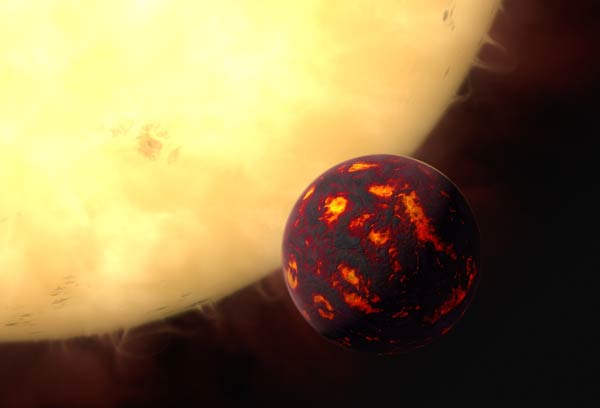‘Super Earth’ found orbiting near by star : Reports

The all new rocky Super Earth exoplanet is revolving around a star which is much smaller and cooler than the Sun
The scientists have recently discovered a new super-Earth planet with a mass of around 5.4 times that of the Earth, orbiting a very bright star near to the Sun.
The exoplanet, GJ 536 b, is not within the star’s livable zone, but its short moving period of 8.7 days and the luminous quality of this star make it an attractive candidate for investigating its atmospheric composition, researchers stated. The star, GJ 536, is a red little dwarf which is quite cool and near to the Sun, they added.

The researchers stated
During the research, a cycle of the magnetic activity similar to that of Sun has been observed, but it is found with a relatively shorter period. “Till now, the only planet we have discovered is GJ 536 b, but we are continuously monitoring the star to see if we can find other companions,” said Alejandro Suarez Mascareno from the Instituto de Astrofisica de Canarias (IAC) and the University of La Laguna (ULL) in Spain.
“Rocky planets are usually visible in groups, especially around the stars of this type, and we are very sure that we can find other low-mass planets in orbits further from the discovered star, with periods from 100 days up to a few years,” Mascareno said. “We are making a programme for monitoring the transits of this new exoplanet to determine its radius and mean density,” he said.
Read Here : ISRO all set for the launch of Chandrayaan-2

“This new rocky Super Earth exoplanet is revolving around a star which is much smaller and cooler than the Sun. But it is sufficiently near and brighter,” said researcher Jonay Isai Gonzalez. “It is also noticeable from both the northern and southern hemispheres, which is very interesting for the future high-stability spectrographs, and in particular, for the possible detection of another rocky planet in the habitability zone of the star,” said Gonzalez.
To spot the Super Earth planet, the researchers had to measure the velocity of the star with accuracy at the order of a metre per second. The planet was spotted in a joint effort between the IAC and the Geneva Observatory, using the HARPS (High Accuracy Radial velocity Planet Seeker) spectrograph on the 3.6M ESO Telescope at La Silla in Chile and HARPS North, on the Telescopio Nacional Galileo (TNG) at the Roque de los Muchachos Observatory, Garafia in Spain.







